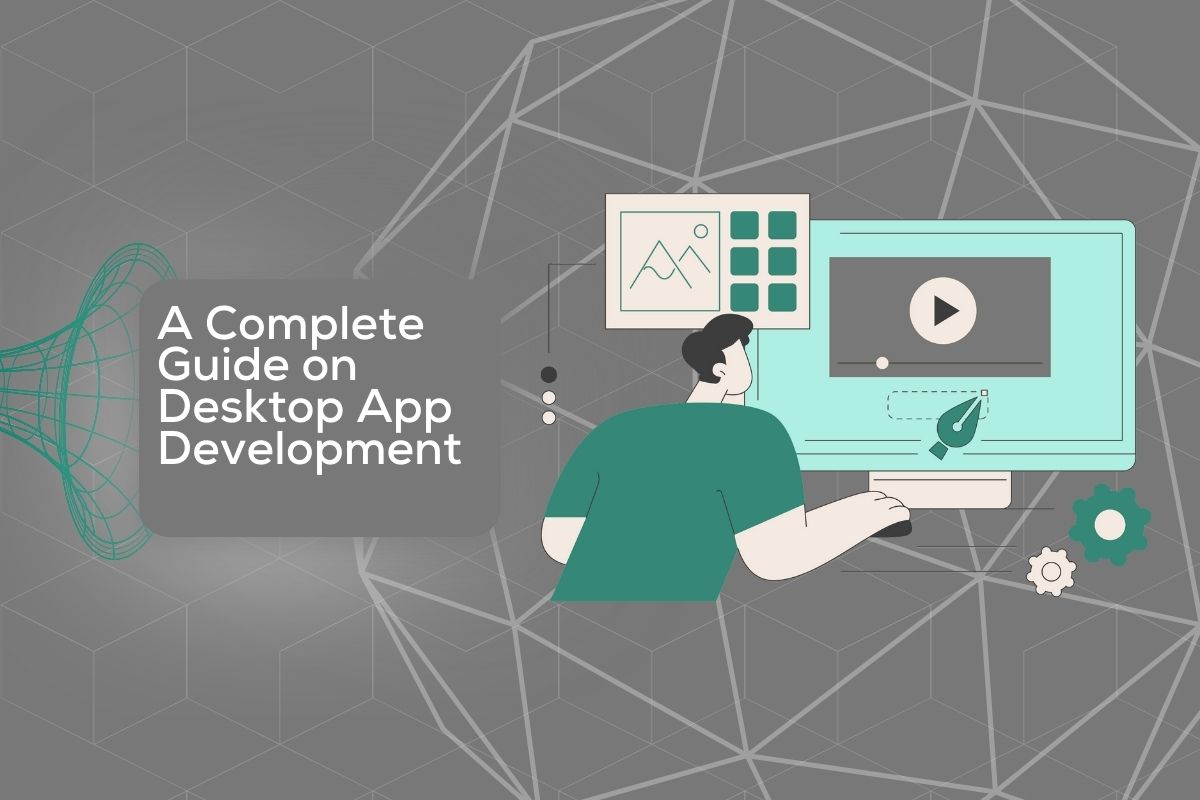How we interact with digital tools nowadays makes such a big difference. That’s where desktop application development stands as an essential part of your developing process. Having a user-friendly and robust database offers a thorough understanding for both newcomers and experienced developers. Let’s explore important aspects that make desktop software both functional and engaging.
What Is Desktop App Development?
Desktop app development is the process of creating software applications that run on desktops and laptops. These applications are installed directly on a computer with operating systems like Windows, Linux, or macOS.
Whether it’s a Windows desktop application development or other operating systems with offline functionality, these apps offer seamless integration and a highly responsive experience. Fast performance and a completely interactive user interface are just some of the reasons why this kind of development is experiencing a big spike in demand.
How Does It Work?
A desktop application works by operating directly on the user’s computer, utilizing the system’s resources to provide functionality. Once installed, these applications can run independently of the internet, offering robust performance and the ability to leverage the full potential of the computer’s hardware.
The design of software prototyping often includes components like user interface, application logic, and data storage, which work together to execute complex tasks and processes.

Explore Different Types of Desktop Applications
These applications come in a wide array of types. Each type fulfills specific needs covering productivity to entertainment tools and apps. This being said, here are the top categories we’ll explore:
- Productivity applications, such as Google Workspace, Microsoft Office Suite, and Adobe Acrobat, are essential for tasks like data analysis, document creation, and presentation development.
- Communication tools like Zoom, Microsoft Teams, and Slack have become vital for remote work and global teamwork, offering capabilities like real-time messaging, video conferencing, and file sharing.
- Graphic design apps include Photoshop and Adobe Creative Cloud. These are indispensable for crafting compelling visuals and multimedia content.
- Accounting and finance applications are also widely used for accurate financial record-keeping and compliance.
- Web browsers, such as Microsoft Edge and Google Chrome, though primarily associated with online activities, are crucial desktop applications that provide comprehensive internet access.
- Games and entertainment applications like Blizzard Battle.net and Steam offer immersive gaming and media experiences.
Desktop vs. Web vs. Mobile App Development
Today’s diverse technological landscape requires staying up to date with trends in mobile development, as well as desktop and web dev. Just consider that more than 36% of total web traffic comes from mobile devices, while a more significant 63.82% is generated by desktop users. However, web development trends are making a strong impact on the overall digital landscape, too. To make things clearer, here’s a table of their main features and differences:
| Features | Desktop | Mobile | Web |
|---|---|---|---|
| Dev environment | Visual Studio and Xcode | Android Studio and Xcode | JavaScript, HTML, and CSS |
| Use | Professional use | Personal use and on-the-go access | Universal accessibility |
| Interface | Many interfaces with more features | Designed for interaction | Designed for various screen sizes |
| Update | Automatic or user-initiated updates | Through app store | Server-side updates |
| Target devices | Desktops and laptops | Smartphones and tablets | Devices with a browser |
| Offline accessibility | Fully functional offline | Limited | Mostly online |
Steps to Build a Desktop App
Building a desktop application involves some crucial steps you shouldn’t omit. The importance of these steps actually lies in the overall success of the development lifecycle. This being said, here are things you should do when developing desktop apps:
- Planning – Define user expectations, project scope, goals, target audience, resources, timelines, and budgets.
- Designing and UI – Create a user-friendly and visually appealing interface using mockups and wireframes for layout visualization.
- The development and coding phase – Convert the design into a functional app using appropriate frameworks and programming languages.
- Quality assurance and testing– With extensive testing at different levels, you’ll ensure reliability, performance, and cross-platform compatibility.
- Maintenance and deployment – After rigorous testing, it’s strategically installed and configured, with ongoing maintenance to keep it updated and functional.

The Cost of Building a Desktop App
The cost of developing this kind of app depends on several factors, including the complexity and type of the app. For a basic or simple desktop application, the cost might start at around $10,000. However, for more feature-rich and complex applications, expenses can escalate to approximately $100,000 or even more.
Considering that rapid prototyping is more than just popular nowadays, it’s no wonder that the final cost is influenced by a range of elements such as the desired features, the app’s complexity, the development team’s expertise, their hourly rates, and compatibility with various platforms.

Benefits of Desktop Application Development Services
With rapid prototyping software development, having top-notch services offers a myriad of benefits, catering to various business and technical needs. One of the primary advantages is top-notch performance, as these applications are capable of fully utilizing the processing power of the user’s computer, leading to faster and more efficient operations.
They also provide better control over security and data privacy, as data is stored locally rather than on external servers. Many desktop apps ensure reliable functionality even without internet connectivity, offering uninterrupted access to key features.

Doing It Yourself or With Professional Desktop Application Development Companies?
The choice between a DIY approach and partnering with a professional desktop application development company like Juratech Solutions hinges on your specific needs and resources. However, if you seek expertise, efficiency, and a tailored solution that aligns with your unique requirements, engaging with Juratech Solutions is a prudent decision.
Our team of professionals is equipped to handle the complexities of both desktop and mobile app development services, ensuring a high-quality, secure, and user-friendly product. Don’t compromise on the potential of your desktop application. Contact us today and take the first step towards transforming your vision into a reality with our expert guidance and support.







